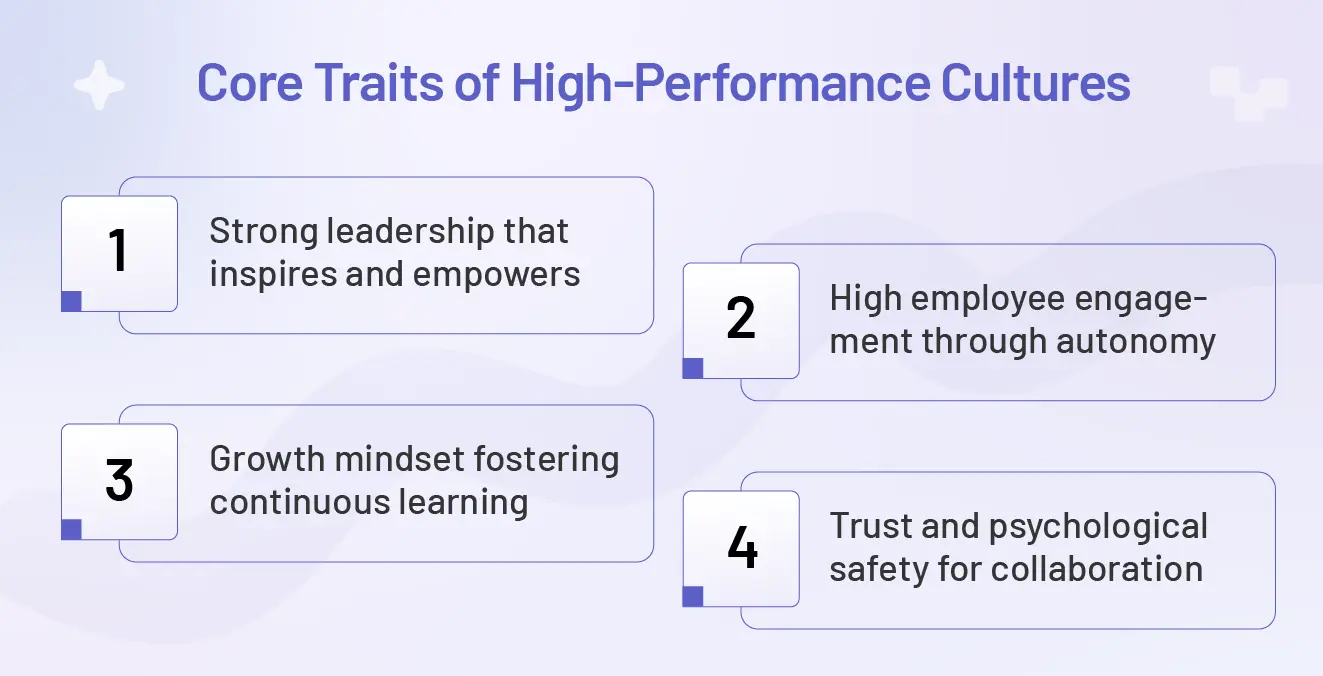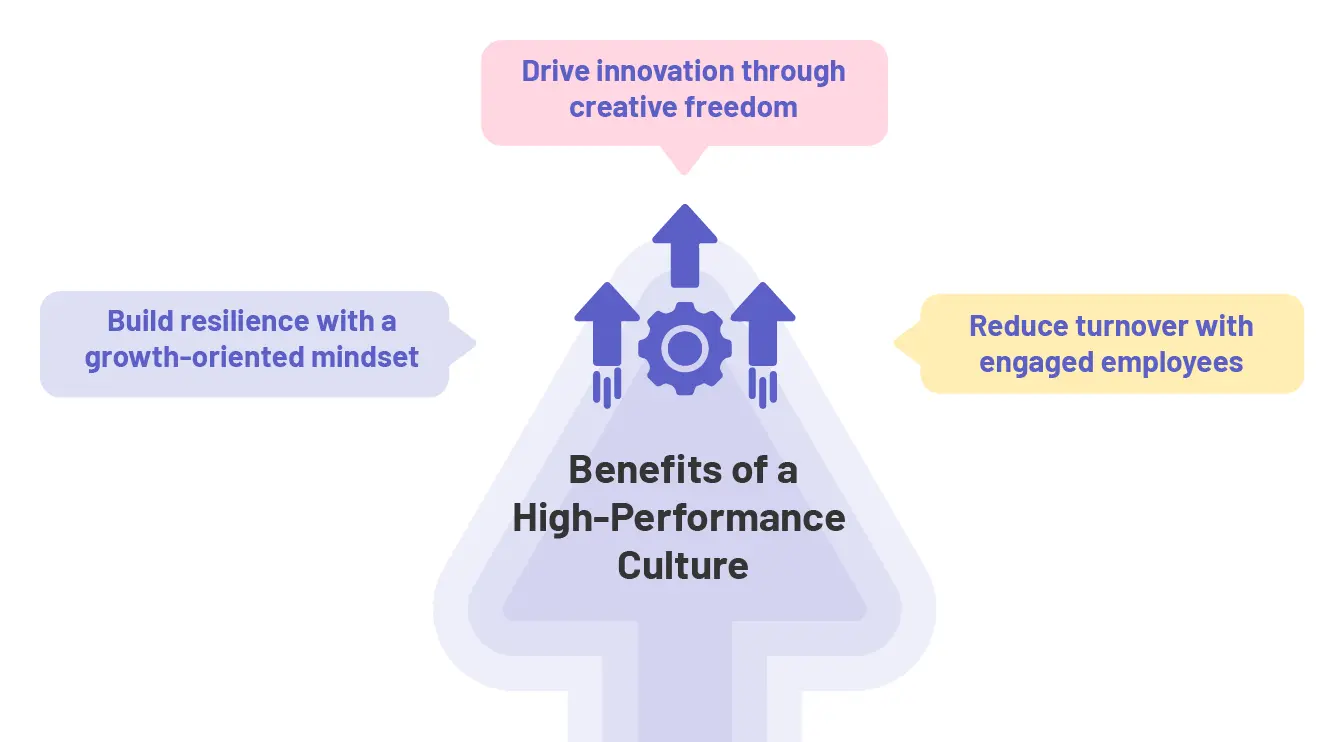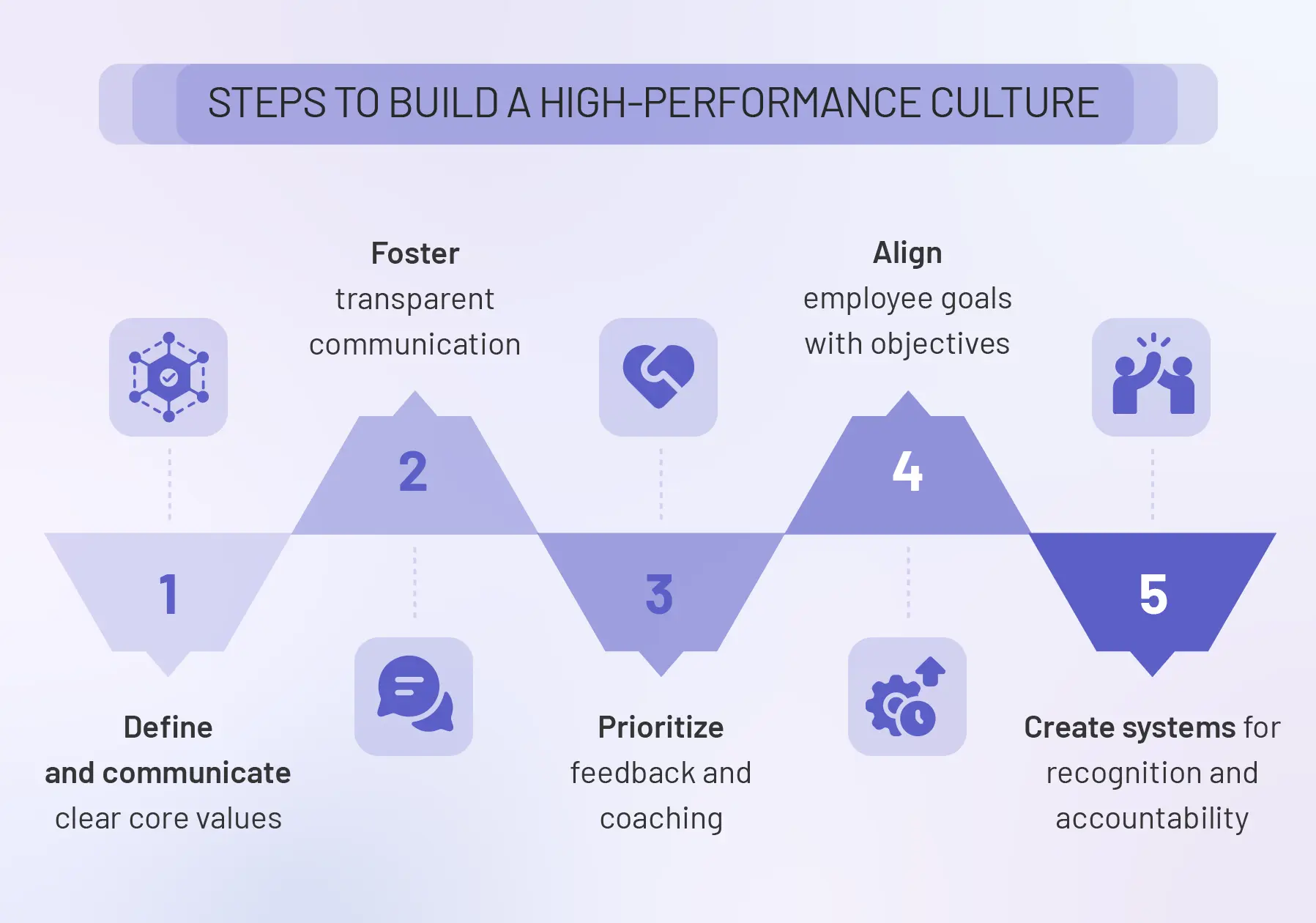A high-performance culture is an organizational environment where employees are motivated, engaged, and empowered to achieve exceptional results. It fosters collaboration, innovation, and continuous improvement, leading to enhanced performance, profitability, and employee engagement.
However, recent trends highlight the importance of cultivating such a culture. In 2024, employee engagement in the U.S. dropped to 31%, marking a 10-year low and signaling a growing detachment between employees and their workplaces.
In this comprehensive guide, we’ll explore what a high-performance culture entails, its key characteristics, benefits, practical steps to build and sustain it, real-world examples, and answers to common questions.
A high-performance culture is a workplace designed to maximize employee effectiveness in supporting business goals while prioritizing well-being.
According to Gartner, it’s a physical or virtual environment designed to make workers as effective as possible in supporting business goals and providing value. Employees in such cultures share a strong sense of purpose, align with the organization’s core values, and are motivated to exceed their goals through effective performance management.
Research from McKinsey also indicates that organizations with high-performance cultures are twice as likely to achieve financial success compared to competitors.
This culture goes beyond short-term gains, fostering an environment where excellence is the norm, driven by leadership, clear values, and systems that support continuous growth.

High-performance cultures are marked by distinct traits that enable employees and teams to thrive:
Effective leaders in high-performance cultures do more than set direction—they model the behavior they want to see. They lead by example, communicate openly, and foster trust by being transparent and accountable. Rather than micromanaging, they coach and support their teams, encouraging autonomy and innovation. This approach helps build a culture where people feel both challenged and supported.
Example: Satya Nadella at Microsoft emphasizes empowerment, collaboration, and empathy, reshaping Microsoft's culture.
Engaged employees are those who feel their work has purpose and that they have the freedom to make decisions. High-performance cultures give people ownership over their roles, encouraging them to take initiative and solve problems. This sense of autonomy leads to higher motivation, better performance, and stronger commitment to the organization’s goals.
Example: Google’s “20% Time” policy allows employees to pursue their own projects, leading to innovations like Gmail.
When everyone understands the mission and how their work contributes to it, teams operate more cohesively. High-performing organizations ensure that goals are clearly communicated and regularly reinforced, often using tools like OKR software to track progress. This alignment helps reduce silos, improves collaboration, and keeps everyone moving in the same direction.
Example: Amazon’s “Working Backwards” approach aligns teams around a clear customer-focused mission.
A growth mindset—the belief that abilities can be developed through effort and learning—is central to high-performance cultures. These organizations invest in professional development goals, encourage feedback, and view mistakes as opportunities to learn. This focus on continuous improvement fosters adaptability and resilience.
Example: Adobe promotes continuous learning through regular employee training, feedback, and growth-oriented performance reviews.
Trust is the foundation of any strong culture. In high-performing teams, people feel safe to speak up, share ideas, and admit mistakes without fear of blame. This psychological safety encourages open communication, creativity, and collaboration, all of which are essential for sustained success.
Example: Pixar fosters an environment where creative risk-taking is encouraged and mistakes are viewed as part of the creative process.

Fostering a high-performance culture yields significant advantages, supported by research and industry insights:

Building a high-performance culture takes intentionality and ongoing effort. By following these five structured steps, organizations can create an environment where employees feel empowered, aligned, and driven to excel.
The first step in fostering a high-performance culture is establishing strong, clearly defined values that shape the company culture.
These values act as guiding principles for decision-making and behavior across the organization. However, it’s not enough to identify values; they must also be consistently communicated and embodied.
Integrate your core values into daily operations, such as onboarding, performance reviews, and internal communications. Clear communication of these principles ensures they become an integral part of the organizational culture.
Open, honest communication creates trust and alignment, both of which are essential for high performance. Employees need to feel heard and valued, while leaders benefit from understanding team concerns and ideas.
Encouraging two-way communication reinforces transparency and improves relationships, empowering employees to contribute to their fullest.
Successful organizations move beyond the traditional annual review by implementing systems of constant feedback and support. Regular dialogue ensures employees stay on track and feel guided in their growth.
Frequent feedback conversations make employees feel engaged, supported, and more willing to improve, leading to stronger results.
A high-performance culture thrives when individual ambitions mirror the organization’s goals. Helping employees connect their career development to the company’s success fosters a stronger sense of purpose.
When personal and professional growth align, employees remain motivated to contribute meaningfully to the organization’s success.
Recognition and accountability are the cornerstones of motivation and sustained high performance. Employees perform better when their efforts are acknowledged and when they clearly understand what’s expected of them.
At the same time, accountability systems like project management tools and regular progress updates ensure everyone stays on track.
Several companies exemplify high-performance cultures, each with unique approaches:
A high-performance culture engages employees through purpose, autonomy, and support, fostering sustainable growth. Toxic performance pressure, however, relies on long hours and negative feedback, ultimately leading to burnout and high attrition rates.
For example, pushing employees to work excessively, as seen in some high-pressure environments, risks disengagement. Providing constructive feedback examples for your manager can help maintain a positive and supportive environment.
Yes, startups can foster high-performance cultures by leveraging leadership and HR software. For instance, using tools like Teamflect, startups can establish a culture of feedback and continuous improvement, even when managing remote employee performance.
Psychological safety is critical, allowing team members to take risks, share ideas, and learn from mistakes without fear of punishment. Google’s Project Aristotle found it to be the top factor in effective teams, driving collaboration and innovation, and helping to maximize employee strengths.
An all-in-one performance management tool for Microsoft Teams
